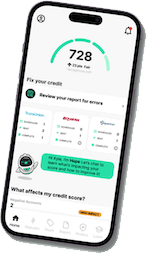My Credit Score Dropped 200 Points

A sudden 200-point drop in your credit score can feel like a financial nightmare, but understanding why it happened is the first step toward recovery. From missed payments to identity theft, several factors can trigger a drastic decline. In this guide, we’ll explore the most common causes, how to pinpoint the issue, and actionable steps to rebuild your credit. Whether you’re dealing with high credit utilization, a collection account, or a reporting error, this article will help you regain control and improve your score.
A sudden drop in your credit score can be shocking even for those with not good credit scores. A few points is manageable but 200 points is beyond frustrating! Whether you’re applying for a mortgage, auto loan, or credit card, such a drastic change can significantly impact your borrowing power. But don’t panic—credit scores fluctuate based on financial activity, and identifying the cause is the first step toward recovery.
In this guide, we’ll break down the most common reasons for a steep credit score drop, how to pinpoint what triggered it, and actionable steps to rebuild your credit.
Common Reasons for a 200-Point Drop
Missed or Late Payments – Payment history is the biggest factor in your credit score. A single 30-day late payment on your credit report can cause a significant drop, especially if your credit score was high. The impact is even worse for payments that are 60 or 90 days late.
High Credit Card Balances or Maxed-Out Cards – Credit utilization (the percentage of available credit you’re using) makes up 30% of your credit score. If your balance suddenly increases or your credit limit is reduced, your credit score can take a major hit. It’s best to keep your credit utilization ratio lower.
New Collection Accounts or Charge-Offs – Unpaid debts sent to collections or written off by lenders reporting on your credit report can cause a sharp decline. Even if you later pay a collection, the negative impact remains.
Bankruptcy, Foreclosure, or Repossession – These are some of the most damaging events to a credit report. Bankruptcy can cause a drastic drop, while foreclosure and repossession signal major financial distress.
Closed Accounts or Credit Limit Reductions – Closing an old credit account can shorten your credit history and impact your utilization. If a lender lowers your credit limit, your balances appear higher by comparison, hurting your credit score.
Too Many Hard Inquiries or New Accounts – Applying for multiple credit cards or loans in a short period can lower your credit score, especially if your average account age decreases as a result.
Identity Theft or Fraudulent Activity – If someone opens accounts in your name or racks up debt fraudulently, it can drastically hurt and cause a lower credit score.
Errors in Credit Reporting – Mistakes on your credit report by credit bureaus or lenders, such as incorrect credit card payments, duplicate accounts, or outdated negative items, can cause a sharp drop.
How to Identify What Caused the Drop
Check Your Credit Report – Request a free credit report for all three credit reporting agencies from AnnualCreditReport.com. Compare it to previous credit reports to spot changes.
Look for Red Flags:
- Late or missed credit accounts or loan payments (30, 60, or 90+ days past due).
- Increased credit card balances or maxed-out accounts.
- New collection accounts or charge-offs.
- Closed accounts or reduced credit limits.
- Public records like bankruptcies or foreclosures.
- Multiple recent hard inquiries from credit applications.
Review Your Recent Financial Activity – Check past bills and statements to see if you missed a payment, had a large purchase, or a credit issuer closed an account.
A sudden drop in your credit score is a sign of significant financial activity or credit reporting changes. Identifying the cause is the first step in addressing the issue and getting your good credit score back.
The Impact of a 200-Point Drop on Loan Approvals
A sudden 200-point drop can make borrowing much more difficult. Here’s how it affects your ability to secure loans:
- Mortgages: You may fall below the minimum credit score needed for approval or face much higher interest rates impacting mortgage payments.
- Loans: Higher interest rates or outright denial of your loan application.
- Credit Cards: You may lose eligibility for premium rewards cards and be limited to secured or high-interest credit cards.
- Personal Loans: Tougher approval odds and less favorable terms with high-interest rates.
If your credit score drops significantly, focusing on recovery before applying for new credit can help you secure better loan terms.
Understanding Credit Scores and How They Work
Before diving into why your credit score may have dropped, it’s important to understand how credit works. Your credit score is a three-digit number that reflects your creditworthiness and helps lenders determine your risk level when applying for loans, credit cards, or mortgages.
Credit Scoring Models
There are different credit scoring models, but the most widely used are FICO® Score and VantageScore®.
FICO® Score – Used by 90% of lenders. Common versions include:
- FICO Score 8 & 9 – General-purpose credit scores used across various lending decisions.
- FICO 10 & 10T – Newer versions designed to provide a more predictive risk assessment.
- Industry-Specific FICO Scores – Tailored for auto loans, credit cards, and mortgages.
VantageScore® – Created by major credit bureaus as an alternative to FICO. Versions include:
- VantageScore 3.0 – The most commonly used version, designed for general lending.
- VantageScore 4.0 – Incorporates additional credit behavior insights for more precise risk assessment.
While both FICO and VantageScore use a 300-850 scale, their scoring criteria and risk interpretations differ slightly:
| Score Range | FICO® Score | VantageScore® |
|---|---|---|
| 800-850 | Exceptional – Best loan terms and lowest interest rates. | Excellent – Top-tier rates and best loan approvals. |
| 740-799 | Very Good – Competitive interest rates and favorable terms. | Good – Well-qualified for most credit offers. |
| 670-739 | Good – Accepted by most lenders, but not the best rates. | Fair – Decent approval odds, but higher rates. |
| 580-669 | Fair – May qualify, but with higher interest and fees. | Poor – Lenders may see this as risky. |
| 300-579 | Poor – Difficult to get approved for most credit. | Very Poor – High risk, limited credit options. |
Some industry-specific FICO scores (like Auto and Credit Card scores) range from 250-900, meaning lenders may see different credit scores depending on the type of credit you’re applying for.
Key Factors That Impact Your Credit Score
Your credit score is determined by five main factors, each carrying a different weight:
- Payment History (35%) – Your track record of on-time vs. late payments. This is the most important factor.
- Amounts Owed (30%) – Also known as credit utilization ratio; how much credit you’re using compared to your limit.
- Length of Credit History (15%) – The age of your accounts; older credit history is generally better.
- Credit Mix (10%) – Having different types of credit (credit cards, auto, personal or student loans, mortgages) can be beneficial.
- New Credit (10%) – Recent credit inquiries and newly opened accounts can temporarily lower your score.
While FICO and VantageScore weigh these factors slightly differently, payment history and credit utilization always carry the most weight.
Preventing a Sudden Credit Score Drop
1. Set Up Payment Reminders & Autopay
One of the most common reasons for a credit score drop is a missed payment. Even a single late payment on your credit report can cause a significant decrease, especially if it’s 30+ days overdue. Here’s how to stay on track:
- Autopay: Setting up automatic payments for at least the minimum amount ensures you never miss a due date.
- Payment Reminders: If you prefer to pay manually, schedule calendar reminders or enable notifications through your banking app.
- Multiple Due Dates? Consider changing your billing cycle to align with your paycheck schedule for better cash flow management. Check with your lender or credit card issuer.
2. Keep Credit Utilization Low
Your credit utilization ratio (the amount of credit used compared to your total credit limit on your credit card account) is a major factor in your credit score. High utilization can signal financial strain and lower your credit score. To manage it:
- Stay below 30% usage, but ideally, keep it under 10% for the best results.
- Make multiple payments per month (known as “credit card cycling”) to keep your balance low.
- Request a credit limit increase from your credit card issuer if you have responsible credit habits. A higher limit can lower your utilization without changing spending habits.
- Pay off large purchases before the statement closing date to prevent a high reported balance.
3. Regularly Review Credit Reports
Errors on your credit report can cause unexpected credit score drops, but they can be disputed. Protect your credit by:
- Checking your report monthly using free services like Dovly, AnnualCreditReport.com, or credit monitoring tools.
- Looking for inaccuracies with the credit bureaus such as duplicate accounts, incorrect late payments, or unfamiliar inquiries.
- Disputing errors immediately to avoid long-term damage. With Dovly, members can automate dispute handling for inaccurate items.
4. Be Mindful of Account Closures
Closing credit accounts, especially old ones, can hurt your credit score by reducing your total available credit and shortening your credit history. To avoid unintentional damage:
- Keep old accounts open, even if you don’t use them often, to maintain a long credit history.
- Use dormant accounts occasionally for small purchases to prevent lenders from closing them due to inactivity.
- Be cautious when consolidating debt, as paying off and closing multiple credit cards at once can spike your utilization on remaining accounts.
How to Recover from a 200-Point Credit Score Drop
1. Check Your Credit Report
Get a free report from AnnualCreditReport.com or a credit monitoring service. Look for errors on payment history, or unfamiliar accounts.
2. Dispute Any Errors
If you find incorrect information, dispute it with the credit bureaus. Dovly’s AI-powered credit repair can help automate and streamline the process.
3. Lower Your Credit Credit Utilization
High balances hurt your score. Paying down credit card debt—especially high-interest accounts—can boost your score quickly.
4. Catch Up on Payments
If you missed a payment, bring your account current as soon as possible. Setting up autopay can help prevent future payment issues.
5. Be Selective About New Credit
Opening too many accounts at once can lower your credit score. Only apply for credit when necessary.
6. Monitor Your Credit Regularly
Credit monitoring helps you track changes, catch fraud early, and stay informed about your credit health.
Real-Life Example: How John Recovered from a 200-Point Drop
John had a credit score of 750, but after missing two student loan payments and maxing out his credit cards, his credit score plummeted to 550. Feeling overwhelmed, he took action: he paid down his balances, set up automatic payments, and disputed an incorrect late payment on his report. He watched his score continue to increase a few points and within six months, his score improved by 120 points, and within a year, he was back in the 700s.
How Long Does It Take to Recover?
Recovery time depends on the reason for the drop:
- Missed Payments – Missing a payment can take months to two years to recover from, depending on severity.
- High Credit Utilization – Paying down balances can show improvement within a few billing cycles.
- Collections or Charge-Offs – These stay on your report for seven years but have less impact as they age.
- Bankruptcy – Chapter 7 stays for 10 years, while Chapter 13 lasts seven years.
- Identity Theft – Once fraudulent accounts are removed, your credit score can rebound quickly.
While a 200-point drop is significant, taking the right steps can put you back on track.
Conclusion
A 200-point credit score drop may feel overwhelming, but it’s not permanent. By identifying the cause, addressing negative factors, and practicing good credit habits, you can start rebuilding your credit score and regain financial stability. Whether it’s disputing inaccuracies, lowering your credit utilization, or catching up on missed payments, every step counts.
If you need help navigating the process, Dovly’s AI-powered credit repair can make it easier to dispute errors and get back on track. Don’t let a credit score drop hold you back—take control of your credit today.
Frequently Asked Questions





